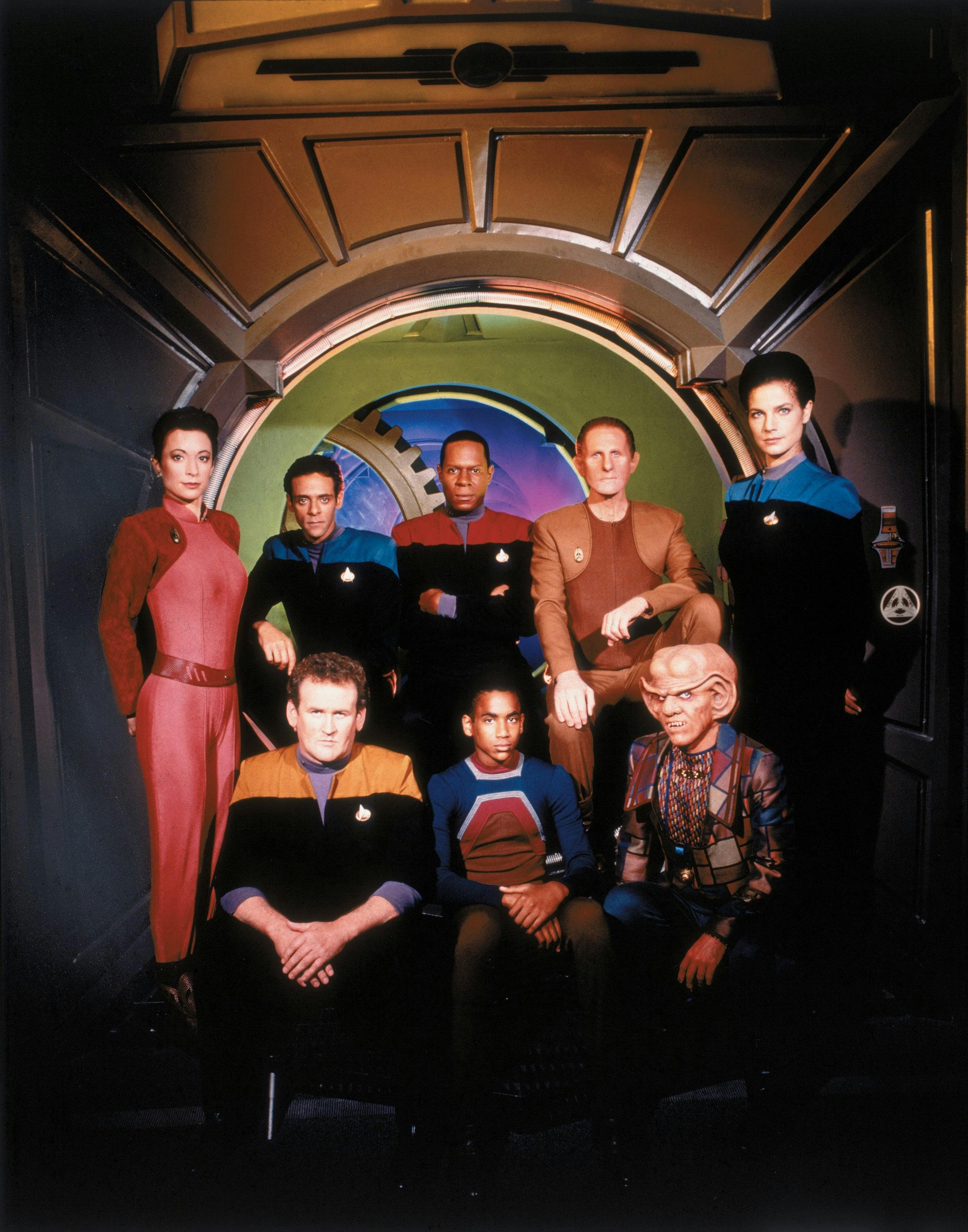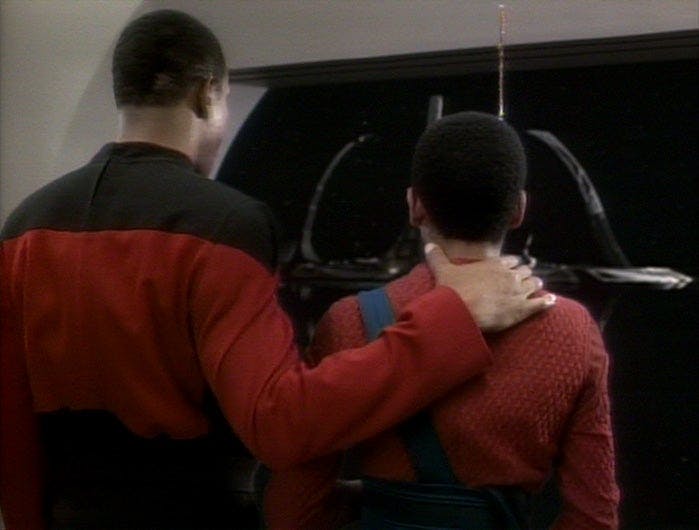Published Sep 30, 2022
Miss Discovery? Try A Condensed Deep Space Nine
Once you finish binge-watching Discovery, Deep Space Nine is a perfect follow-up.

StarTrek.com
Star Trek: Discovery launched at the perfect time to introduce new fans to the Star Trek universe. With a serialized story and film-quality production values, Discovery brought the franchise into the current Golden Age of Television, successfully weaving together touchstone themes and canonical world-building into a serialized story — and with the recently completed third season, the show ushered in a completely new time period of the Federation.
Because of this, Discovery has drawn in many fans with only a casual knowledge of Star Trek lore. But with Discovery on hiatus, now’s the perfect time to go deeper — except finding a starting point can feel overwhelming when looking at the sheer volume of Star Trek prior to Discovery.
One of the problems with Star Trek’s back catalog is that there’s simply so much of it. Consider that modern TV has conditioned viewers to expect a serialized story between eight and twelve episodes per season — that’s a far cry from the previous standard of 20-some episodes per season, as well as a tonal shift from the highly episodic nature of previous series. In fact, The Original Series’ 79 episodes over three seasons eclipsed, say, Game of Thrones’ 73 episodes over eight seasons.
So where should newer fans go next?

StarTrek.com
Enter Star Trek: Deep Space Nine, a show that has aged remarkably well, particularly with its series-spanning story arc. In fact, it feels very much like modern TV thanks — if you know how to watch it.
Deep Space Nine has 176 total episodes over seven seasons, which is a daunting amount. But using episode guides, such as this one from Mashable, condenses the overall length of the show down to modern standards. While this filters out standalone character development-focused episodes, it focuses tightly on the core story, ultimately pacing it similar to current TV (and thus, Discovery). By trimming the series down to about 60-70 episodes, the intricate story plays out in a unique and completely satisfying way, with elements being planted from the very start of the show.

StarTrek.com
The series starts with the two-part pilot “Emissary,” an opener unlike any other in Star Trek. The Next Generation began with a mission to establish its new crew and ship, and Voyager did something similar while throwing the ship into the Delta Quadrant. Enterprise also gathered its crew but through the lens of being at the birth of Starfleet. And The Original Series simply jumped into its five-year-mission.
Deep Space Nine’s pilot is a multi-layered introduction that sets up story elements with long payoffs. It brings in mysteries (Who are the Founders and what do they want?), political factions (the Bajorans and Cardassians), hidden motivations (What is Odo’s true past?), and a tense central situation (the wormhole to the Gamma Quadrant) that play out over years, twisting and turning as further allies and adversaries enter the fray.
However, it’s not just the serialized nature of Deep Space Nine’s core story that makes it appealing to modern viewers. Its tone is markedly unique, with the titular space station akin to a new outpost set up in the wild west, right down to the saloon. From there, the series weaves a morally complex tapestry with a grit unseen in any other Trek series, even Discovery. Because half its cast is not Starfleet, expectations are immediately subverted, and while it would have been easy to play someone like Quark (the Ferengi bartender) as a slapstick trope, Deep Space Nine creates a rich history for its main cast, allowing them to evolve as the series gets deeper.
If The Next Generation is about the ideals of space exploration and Voyager is about the journey home, Deep Space Nine is about holding onto ideals in less-than-ideal circumstances, creating tough choices and moral quandaries outside of typical Federation jurisdiction. And because Deep Space Nine lives in the same era as The Next Generation and Voyager, numerous elements overlap to create a shared universe found in most current media franchises. In fact, Voyager’s pilot makes much more sense regarding Chakotay’s relationship with the Maquis after viewing Deep Space Nine.
Because a condensed episode guide matches the amount of time modern TV viewers are used to spending with a cast — and because it highlights the most intense and heightened circumstances — character development still plays out naturally, even among such a big cast. However, there’s one further benefit to this method, and it’s completely unique to this experience — When you finish the core story of Deep Space Nine, there’s still 100-ish bonus episodes to enjoy. This spans fantastic character-focused episodes (such as Quark’s “Body Parts”) to the requisite wacky Holodeck journey (Bashir and Garak in “Our Man Bashir”) to greater Trek continuity (“Trials and Tribble-ations”).

StarTrek.com
Through it all, one of the impressive aspects of Deep Space Nine is that the sets, effects, and alien make-up all hold up quite well considering the series was made in the 1990s. While clearly a cut below the 21st Century standards set by Discovery, it’s still engrossing and realistic, and the Cardassian/Ferengi makeup holds up as well as anything you’ll see in recent productions. That leaves only one area where the series is outdated; it's still in standard definition.
Star Trek: Deep Space Nine — The Journey
Due to technical issues with the effects and editing, Deep Space Nine can't easily undergo the same upgrade process as The Next Generation, so fans jumping from Discovery will see a noticeable downgrade in resolution. Will the story of Sisko, Kira, Dax and the rest ever play out in proper high-definition? Without any official plans on the horizon, a very science-fiction, fan-driven approach has arrived to save the day. Much like the Sphere data came to the rescue of the Discovery crew, artificial intelligence may be the best way to upgrade Deep Space Nine — and then it will truly stand side by side with the best series of TV's Golden Age.
This article was originally publishing on January 26, 2021.
Mike Chen is a science fiction writer who also writes about his favorite science fiction. His latest novel WE COULD BE HEROES (HarperCollins) is about the unlikely friendship between a reluctant supervillain and a mediocre superhero. In other words, it’s perfect Holodeck fodder for Bashir and Garak. Follow him on Twitter @mikechenwriter.
Star Trek: Discovery currently streams exclusively on Paramount+ in the U.S. Internationally, the series is available on Paramount+ in Australia, Latin America, the UK, and South Korea, as well as on Pluto TV in Austria, France, Germany, Italy, Spain, and Switzerland on the Pluto TV Sci-Fi channel. It will also stream exclusively on Paramount+ in Italy, France, Germany, Switzerland and Austria later this year. In Canada, it airs on Bell Media’s CTV Sci-Fi Channel and streams on Crave. Star Trek: Discovery is distributed by Paramount Global Content Distribution.
Stay tuned to StarTrek.com for more details! And be sure to follow @StarTrek on Facebook, Twitter, and Instagram.

